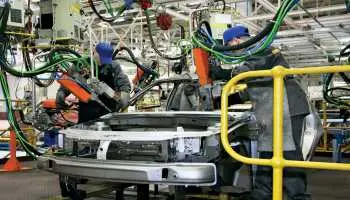A manually operated electrical device called a panel mounted disconnect switch is made to safely cut off circuits or electrical equipment from the power source. In order to prevent electrical shock or equipment damage, technicians and maintenance staff can disconnect power before servicing or repairing systems thanks to this device, which is usually housed inside an electrical panel or enclosure. These switches are essential for adhering to electrical codes and workplace safety laws, as well as for guaranteeing safety during maintenance. Applications for panel-mounted disconnect switches are numerous and include utility infrastructures, commercial buildings, data centers, industrial machines, and renewable energy systems.
Drivers:
The market for panel mounted disconnect switches is expanding rapidly worldwide as a result of multiple convergent trends. Rapid industrialization and the growth of manufacturing sectors in developing nations have increased need for dependable power isolation, which is necessary for maintenance and machinery protection. At the same time, older systems are being widely upgraded due to strict workplace safety standards, such as those focusing on electrical isolation and arc-flash prevention. Global grid upgrading and the move toward renewable energy sources are important additional drivers. Due to the increase in wind and solar installations, high-performance disconnect switches that can integrate with smart grid technology and manage fluctuating demands are required.
Challenges:
The high initial and continuing maintenance costs of sophisticated switchgear are a significant barrier. Modern models can cost a lot more than conventional ones, particularly those that have IoT-enabled remote monitoring. This discourages small and medium-sized businesses with limited funding. Additionally, incorporating these switches into the current electrical infrastructure frequently necessitates intricate retrofitting and professional personnel, which increases installation time and expense. Another issue is the volatility of the supply chain. Price swings for raw materials, component shortages, and logistical issues can all cause manufacturing delays, increase costs, and reduce overall profitability. The lack of skilled engineers and technicians with domain-specific knowledge around the world exacerbates these difficulties, resulting in delays, increased labor expenses, and installation mistakes.
Market Trends:
The sector is expected to grow significantly due to improved safety protocols, higher operational effectiveness, and efficient energy management in industrial buildings. Furthermore, government attempts to update electricity systems and an increase in construction activities in important regions will accelerate the industry's pace. The business climate will be stimulated by the growth of the mining, oil and gas, and heavy engineering sectors as well as the growing need for high-power/high-voltage current switches. The industry's momentum will be fueled by the ongoing modernization of commercial electrification projects along with growing decarbonization initiatives. The need for industrial disconnect switches will also rise as a result of power substations' requirement for load isolation.
Global Panel Mounted Disconnect Switch Market Key Players:
ABB, B&J-USA, c3controls, Changan Group, Eaton, Emerson Electric, EMSPEC, General Electric, Havells India, Honeywell International, are just a few of the major market players that are thoroughly examined in this market study along with revenue analysis, market segments, and competitive landscape data.
Global Panel Mounted Disconnect Switch Market Segmentation:
By Product: Based on the Product, Global Panel Mounted Disconnect Switch Market is segmented as; Fused, Non-Fused.
By Voltage: Based on the Voltage, Global Panel Mounted Disconnect Switch Market is segmented as; Low (≤ 11 kV), Medium (> 11 kV - 33 kV), High (> 33 kV).
By Application: Based on the Application, Global Panel Mounted Disconnect Switch Market is segmented as; Commercial, Industrial, Utility.
By Region: This research also includes data for North America, Latin America, Asia-Pacific, Europe, Middle East & Africa.
This study also encompasses various drivers and restraining factors of this market for the forecast period. Various growth opportunities are also discussed in the report.





































